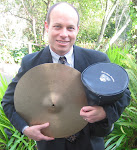 |
| Diane Ravitch/Picture from Stanford.edu |
But can they make sense of what they see and hear? Do they have the perspective to separate what is important from what is trivial? What is durable from what is ephemeral? Can they interpret the significance of the day's news? Are they able to discern patterns of trends and events? Are they capable of introspection? Can they relate their experiences to universal themes that have been explored by great writers through the ages? These are only a few of the potential benefits of the study of history and literature (P.202).Ravitch and Finn found that students scored poorly in their understanding of history and literature. Things are worse now. Students, especially boys, read less today than they did in the 1980s, and their corresponding amount of knowledge has shrunk further. (See my blog, How Boys Can Do Better in School.)
Thus the answer to all of Ravitch and Finn's questions above would be an emphatic "no!" Only the elite, perhaps the top 20 percent of graduating California high school seniors can separate the wheat from the chafe and put their experience in a larger context and make sense of the world around them. I find these kids in our Advanced Placement (college-level) program.
What to Do
Since students today come to class with less background knowledge and a smaller vocabulary than their cohort of 25 years ago, teachers must assume that they are less capable. Below are words used for one of my lessons on industrialization. These words and phrases are difficult for my average high school sophomores. They have trouble understanding what the words mean. When these words are mastered we can better place the terms into historical context.- wages docked
- consent
- figuring out the number of hours on the job--6AM to 7PM
- the sick fund
- dismissal
- deference
- untrue allegations
- wage advances
Third, Ravitch and Finn write about the need to include chronology in history lessons, giving the curriculum more meaning by putting it into context with other historical facts they may (we hope) know. This is even more important today. I enjoy creating parallel timelines that show world and American history in sequence. Most male students are interested in transportation, Stephenson's Rocket to the Model T, weaponry, the musket to the M-16, and technology, the typewriter to the PC, so add those categories on your timelines.
Adults Acting Like Adults
Ravitch and Finn are squarely against "romantic" practices such as letting adolescents learn what they want to learn--the view that naturalness is good and schools should provide freedom where children can develop naturally. (See my blog Educational Ideologies and Applications here.) Instead, Ravitch and Finn concede that children do not
...naturally gravitate to academic subjects or spontaneously immerse themselves in the lore of their civilization. Children are often not the best judges of what they need to do and know. In general, we believe that children learn pretty much what the important adults in their lives make a point in seeing that they learn: in school, at home, and through a myriad of other means (P. 203).A lot is at stake. "Failure to make this cultural knowledge part of every child's inheritance serves to reinforce invidious social class distinctions (P. 235)." In other words, those who favor social justice and equality should demand that all children learn America's historical canon.




No comments:
Post a Comment